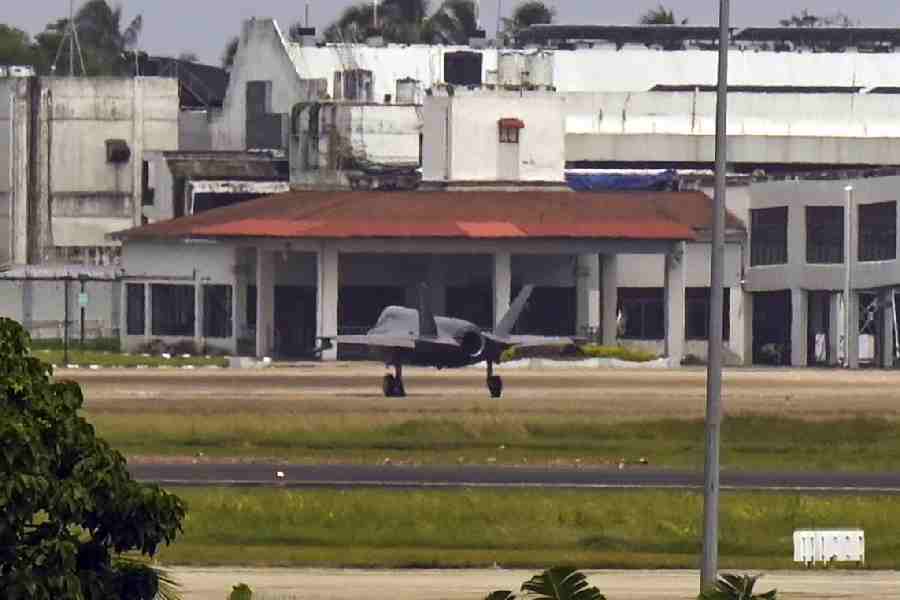 |
| M.N. Roy (right), executive director of SAIL (raw material division), with Craig Senger, counsellor commercial, Australian government, in Calcutta on Tuesday. Picture by Kishor Roy Chowdhury |
Calcutta, Nov. 21: The Steel Authority of India (SAIL) is exploring the possibility of setting up three to four pellet plants across its iron ore mines in Jharkhand, Orissa and Chhattisgarh.
The company has set a target to meet 15 per cent of its total iron ore requirement through pellets by 2011-12.
According to the corporate plan, SAIL’s steel production will reach 20 million tonnes by then, requiring around 36 mt of ore.
Therefore, the company intends to have pellet plants with a combined capacity of 5-6 mt, entailing an estimated investment of Rs 2,500-3,000 crore.
At present, only Essar Steel has a pellet plant among the top five integrated steelmakers in the country.
SAIL plans to float a global tender to get the best technology for the pellet plants. Consultants will be appointed for doing detailed project reports (DPR).
“We are planning to issue the tender early 2007. We are preparing the papers for it,” M.N. Roy, executive director of SAIL (raw material division), said.
The company’s move follows the urgency it felt to use iron ore fines that are wasted as of now.
SAIL is now looking at the best way to utilise the limited mining resource.
It may set up four plants catering to mines like Taldih, Barsua, Kalta, Meghahatuburu, Kiriburu, Bolani, Gua and Rowghat.
The Chiria mine in Jharkhand will have a beneficiation plant only.
At present, SAIL has a production capacity of 11 million tonnes. It mines about 20 million tonnes iron ore.
It now meets 30 per cent of the requirement in the lump form while the rest is fed by the sinter plant route.
It intends to reduce the use of lump to 15 per cent in future while another 15 per cent will be taken up by pellet.
Pellet is made of micro fines of ore — a waste product generated during separation of aluminium and silica from iron ore.
The fines are agglomerated to create pellet, high in ferrous content. As a result, pellet increases the productivity of blast furnace.
Using micro fines will also mean that the company would require less lumps. Consequently, its mining productivity will also increase — it can generate more usable ore for steel production from less mining.
China, the world’s largest steel producing nation, uses pellets in a big way, underlying its appetite for fines import.
India has not taken the pellet route till now as it has rich iron ore reserves. The country exports close to 90 million tonnes of fines. Experts feel that more companies will now look for the pellet route given that steelmakers are now lobbying for a ban on iron ore export.











